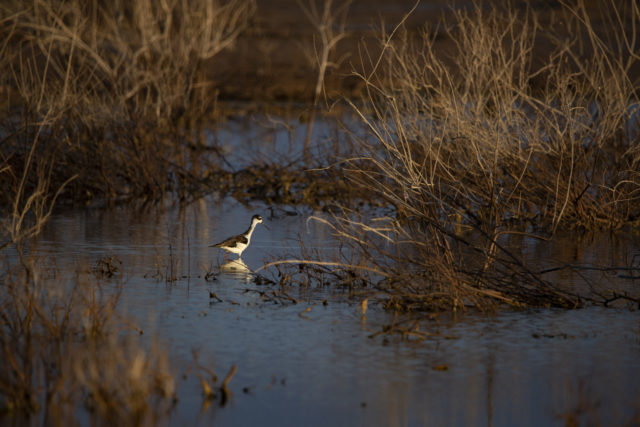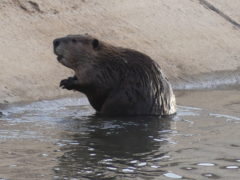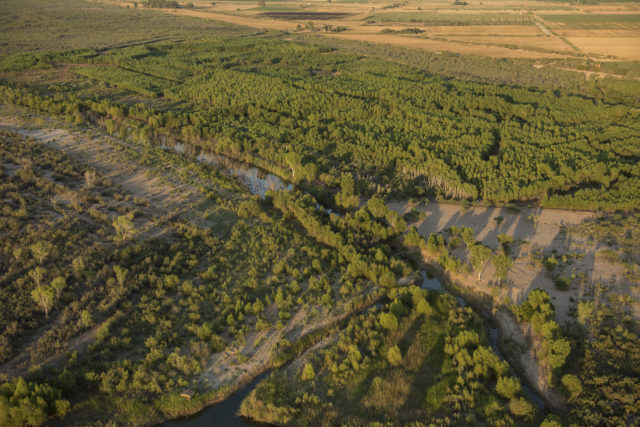A lot can be done with just a little water
Water is precious in the Colorado River system.
It’s refreshing to dip your feet in a creek fed by spring’s snowmelt, but what do you feel turning on the tap to rinse out the kettle in the morning? Almost nothing? It shouldn’t be like that, but it takes many of us a conscious effort to notice that the water that sustains us each day is thanks to the Colorado River.
This one river is relied on by 40 million people—or twice the population of the New York City metro region. By the time we all take a drink, water our crops, wash our clothes and use it in our industries there is extraordinarily little left for the environment, especially at the end of the river. The Delta that was once a robust ecosystem, a wall of trees, a maze of lagoons and home to many has been challenged. For decades it was like an office plant left behind in the pandemic—dried out and brittle.

Slowly it is becoming green again. You can see the results of sharing just a little bit of water with nature: wildlife and people thrive.
Bobcats and coyote, raccoons and skunks all drink from the water. They find shelter in what is the largest and most dense stand of native riparian habitat along the Colorado River in Mexico.
The restoration happening along the Colorado River Delta in Mexico is incredible
We have restored nearly 600 of the 1,000 total acres by a coalition named Raise the River, comprised of organizations working together along the Colorado River in Mexico. People like you who love nature and are inspired to make a difference have volunteered with us to plant over 170,000 native cottonwoods and willow trees in restoration sites in the Mexicali Valley, and because of this we are seeing many species of animals return.

Beavers are living at our Laguna Grande restoration site. Bobcats and coyote, raccoons and skunks all drink from the water. They find shelter in what is the largest and most dense stand of native riparian habitat along the Colorado River in Mexico. And every year thousands of birds rest there on their migrations.
Experimentation has led to innovation
Our scientists have learned how to make a bigger impact from tiny amounts of water to restore the Colorado River Delta. In the early days of restoration, we dug furrows to plant target riparian tree species. The resulting trees grow up in neat rows, all the same height, like in a tree farm. However, experimenting with direct seeding with native tree seed increases diversity and habitat resilience, and now both techniques are used.
How we water the restoration sites has been refined over the years, experimenting on a small scale has taught us the best methods to bring to hundreds of new acres each year. For instance, making use of natural landscape features like shaping meanders and lagoons helps water get to young plants and raises the water table to support a variety of plant species.
By the end of 2021, 81 new acres (60 American football fields) will be restored, and over 7,000 trees will be planted—all while using small amounts of water efficiently.

Colorado River Delta, Mexico.
©Bill Hatcher/Sonoran Institute 2021
Restoring the estuary
Delta restoration is not all trees and beavers. Allocating more water for the environment allows fresh water to flow to the estuary, where the river meets the sea and where saltgrass, fiddler crabs, marsh birds and even dolphins and sea lions thrive.
Collaboration between the US and Mexico and all Colorado River water users is necessary.
It can’t be done alone
Collaboration between the US and Mexico and all Colorado River water users is necessary. Decisions at all levels must be inclusive. The perspective of tribes, diverse cultural communities, rural communities and agriculture brings deep knowledge and understanding to the process of deciding how to share the water. Non-profits too must work together to tackle a project as massive as bringing the Colorado River delta back to life. That’s why we are part of Raise the River—we can do so much more together.
This spring and summer we’ll be sharing important updates about Delta restoration and the people who make it happen so that the resilient Colorado River will be so much easier to imagine every time you fill a glass with water. Make sure to follow us to see how!
Blog Post By: Corinne Matesich, Marketing Communications Manager and Gabriela González, Environmental Education and Research Coordinator
Este mensaje esta disponible en español.
